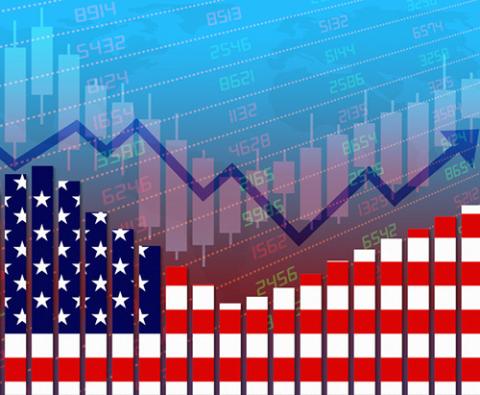NRF: U.S. economy maintains momentum amid challenges

The U.S. economic picture is far from perfect, but stronger than expected by the National Retail Federation (NRF).
NRF chief economist Jack Kleinhenz said the U.S. economy is continuing to grow even as labor disputes and uncertainty created by Congress add to the ongoing challenges of inflation and high interest rates.
“New turbulence from the expanding autoworkers strike and the threat of a government shutdown – which could still happen after Congress’ short-term funding measure expires – have added to the existing headwinds already facing the economy,” Kleinhenz said. “Nonetheless, the economy continues to chug along and defy recession predictions, proving it to be more resilient than anticipated.”
Kleinhenz’s comments came in the October issue of NRF’s Monthly Economic Review, which said the final 2.1% increase in gross domestic product (GDP) reported by the Bureau of Economic Analysis for the second quarter of 2023 came after revisions that reflected less consumer spending on both goods and services than originally estimated.
Consumer spending grew, but only 1.8% year-over-year adjusted for inflation rather than the original estimate of 2.3%, as spending on services like household utilities and vehicle maintenance was revised downward along with spending on goods like home furnishings, appliances and clothing.
[Read more: Retail sales notch small gain in August despite slowing economy]
“While the data has shown continued economic growth, weaker growth as mirrored in the GDP revisions suggests that higher interest rates and tighter lending standards are working more thoroughly than previously recognized,” Kleinhenz said. “Since higher interest rates typically slow down the economy, the Federal Reserve is most likely pleased to see that higher rates are having an impact on employment, economic output and corporate results.”
Incoming data suggests that the just-ended third quarter was largely on par with the second quarter and that 2023 could still have a “soft landing" rather than a recession, according to Kleinhenz.
Consumer confidence takes a hit
The Conference Board’s Consumer Confidence Index fell 5.7 points to 103 in August 2023, and the University of Michigan Index of Consumer Sentiment retreated to 68.1 from August’s already low 69.5 as oil and gas prices continued to rise.
Nonetheless, year-over-year spending rose 5.8% in August, tracking a 7.3% increase in disposable income. The increase came even though the Personal Consumption Expenditures Price Index – the Federal Reserve’s preferred measure of inflation – rose 0.4% from July in August and 3.5% year over year.
Job growth slows
Nonfarm payrolls gained 187,000 jobs in August 2023, up from 157,000 the prior month but far below the average monthly gain of 271,000 over the past year. Meanwhile, the unemployment rate jumped 0.3 percentage points to 3.8% in August as more people looked for jobs.
After falling for three consecutive months through July, job openings rose to 9.6 million in August from 8.9 million in July but were far below the 10.2 million a year earlier. Hiring ticked up slightly from 5.82 million in July to 5.86 million, but was below the 6.5 million a year earlier.
Separations, including layoffs, were essentially unchanged in August and have come down after a small surge earlier in the year. Unemployment insurance claims remain at historical lows and show no signs of a pickup in layoffs, which would be a leading signal of a pending recession.
“With the Federal Reserve eager to see job growth weaken without causing the unemployment rate to take off, a number of indicators suggest that the tight labor market is cooling – but in the right way,” said Kleinhenz.



